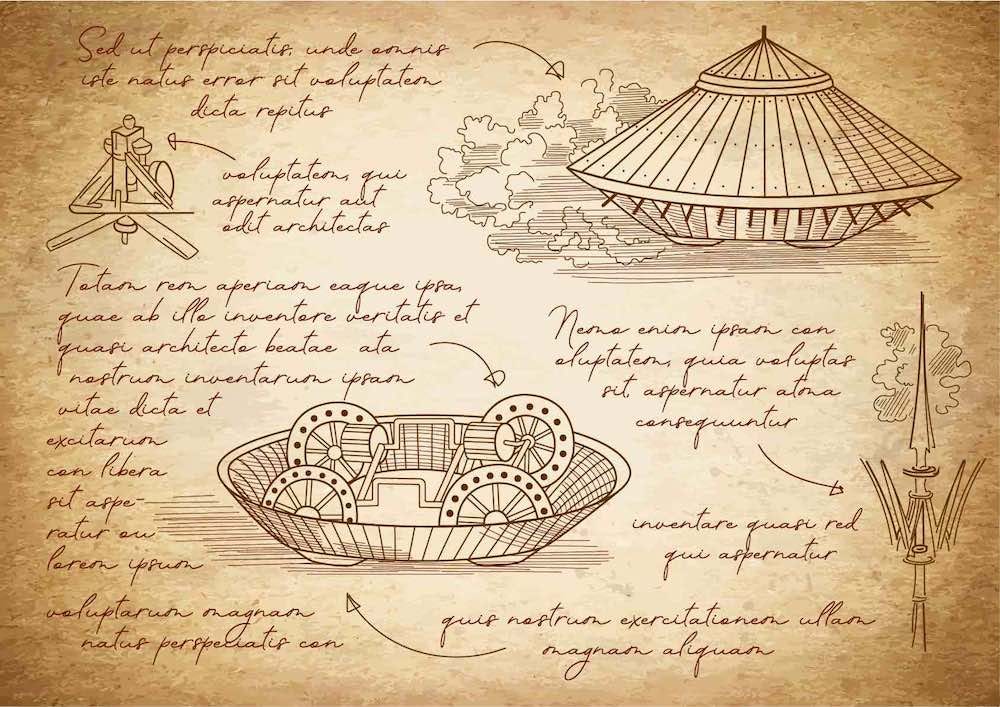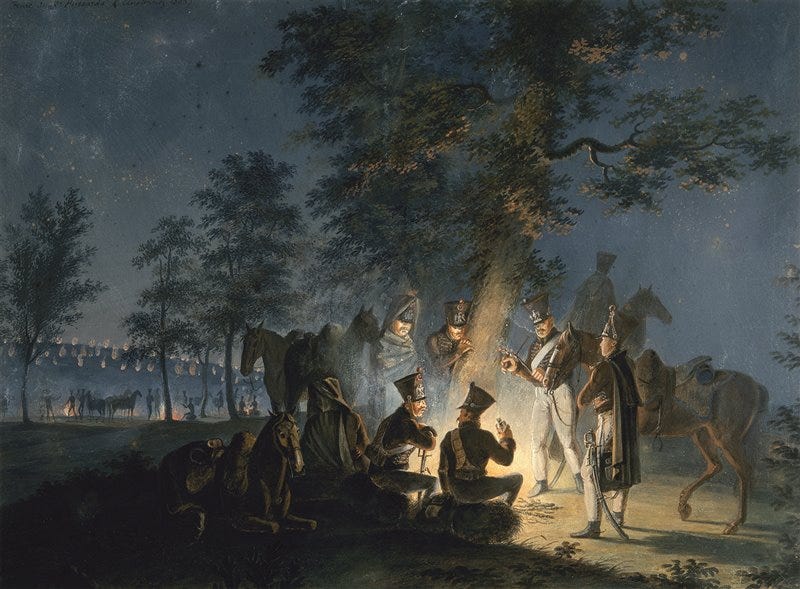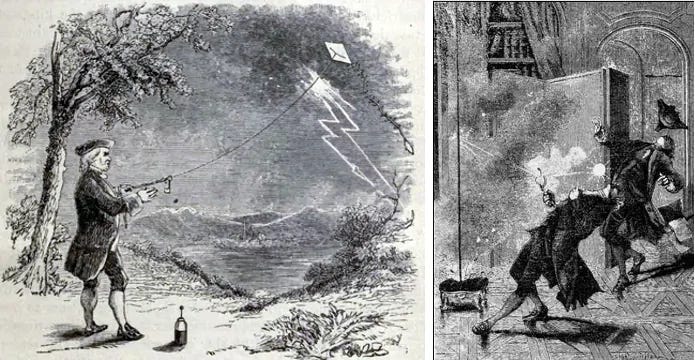The Conventional Sleep Model
The conventional model of sleeping eight hours per night is deeply ingrained in the cultural and biological fabric of humanity, supported by the circadian rhythms that regulate our sleep-wake cycle. But is it really the optimal approach for everyone? By adopting alternative sleep patterns, we might unlock unexplored levels of productivity and creativity. Some of history's brightest minds have defied conventions, optimizing their waking hours to achieve extraordinary accomplishments.
Nikola Tesla: The Eccentric Visionary
Nikola Tesla, whose discoveries in electromagnetism were fundamental to the development of modern electrical energy, was a prolific source of inventions and ideas: from the unrealized underwater mail tube to the development of alternating current (AC) motors, to the transmitter capable of using atmospheric energy to produce unlimited, wireless, free electricity (built in Long Island but later destroyed due to conflicting economic interests).
Tesla's deep study of alternating currents supported their greater usability compared to direct current (DC), leading him to build the first AC motor. He went on to perfect AC motors and file numerous patent applications (around 700 in total), developing the idea that multiphase AC could transmit electrical energy over long distances.
“I have worked ceaselessly for 38 years, stopping only for a few days,” he said. This relentless work ethic is why he never married and led a solitary life. Tesla placed immense value on introspection, noting, “Most people are so absorbed in the contemplation of the outside world that they are wholly oblivious to what is passing on within themselves.”
Tesla was known for his peculiar sleep habits. He rarely slept more than two hours a day, often dividing this time into short cycles. This extreme regimen was reflected in his frenetic productivity, which included extended periods of work in his laboratory, experimenting with wireless energy transmission and other revolutionary technologies.
Tesla's work on the rotating magnetic field and AC made a fundamental contribution to the electrification of the entire world. However, his name is more often associated with the concept of free energy than with his revolutionary inventions. According to Tesla, this “new” energy was unlimited, could be extracted from the environment at no cost, transmitted anywhere, and “received” with a simple antenna. Such claims naturally sparked interest and curiosity. Tesla intended to use the Wardenclyffe Tower to transmit large electric powers by exploiting the earth's natural resonance.
Leonardo da Vinci: The Renaissance Polymath
Leonardo da Vinci, an emblematic figure of the Renaissance, epitomizes the polymathic genius. In addition to artistic masterpieces like the "Mona Lisa" and "The Last Supper," Leonardo was a prolific inventor, designing the first parachute, airplanes, helicopters, and even war machines. Many of his inventions, like the bat-shaped flying machine or the ornithopter, demonstrate his ability to observe and apply natural principles to technology.
Among Leonardo’s inventions, the so-called “robot knight” is perhaps the most original and forward-looking. The humanoid mechanical automaton was likely designed to entertain the Sforza court in Milan, though there is no evidence it was ever built. This ancestor of modern robots was activated by a series of pulleys enabling movement, based on Leonardo’s studies of human anatomy and musculature.
Leonardo’s adoption of the polyphasic sleep cycle, known as Uberman, allowed him to intersperse short and frequent sleep periods with intense work sessions, maintaining a high level of mental and physical energy. He slept for 20 minutes six times a day, totaling two hours.
This sleep pattern was crucial for his prodigious output of works and theories, enabling him to maximize his natural curiosity and tenacity.
Napoleon Bonaparte: The Nocturnal Military Genius
Napoleon Bonaparte was not only an extraordinary military and political leader but also a man who transformed Europe with radical reforms such as the introduction of the metric system and the Napoleonic Code, which influenced modern legal systems. His reduced sleep regimen allowed him to remain vigilant and operational during crucial hours. He typically slept in short intervals, often during the night, enabling him to plan military campaigns and manage state affairs with enviable mental freshness.
One of Napoleon's most celebrated military achievements was the Battle of Austerlitz in 1805, often considered his greatest victory. In the months leading up to the battle, Napoleon cleverly lured the Austrian and Russian armies into a trap by feigning weakness. On December 2, despite being outnumbered, he executed a brilliant strategy that involved leaving his right flank exposed to entice the Allies into a vulnerable position. His forces, led by Marshal Soult, launched a devastating counterattack, shattering the Allied center and securing a decisive victory. This triumph forced Austria to cede significant territories and compelled Russia to withdraw from the conflict, cementing Napoleon's reputation as a military genius.
Buckminster Fuller: The Futurist and His Dymaxion Vision
Buckminster Fuller, with his radical approach to design and innovation, left an indelible mark in fields such as architecture, design, and sustainability. Among his most influential inventions are the Geodesic Dome and the Dymaxion Car, vehicles that anticipated concepts of energy efficiency and functional minimalism. Thanks to his sleep cycle called Dymaxion, which involved 30-minute sleep cycles every six hours for a total of two hours of sleep per day, he made significant progress, maximizing productivity and creativity. Although this regimen was not widely adopted, Fuller's method highlighted his dedication to continuous improvement and experimentation, qualities that permeated all his works and inventions.
The Dymaxion Car, on the other hand, embodied Fuller’s vision of more efficient and sustainable transportation. This three-wheeled vehicle, with an aerodynamic design and rear engine, promised to be more economical and safer than conventional cars. Although it never entered mass production, the Dymaxion Car influenced subsequent thinking on urban mobility and vehicle design.
He was a pioneer whose work transcended disciplinary boundaries, seamlessly integrating technology, sustainability, and design in innovative ways that continue to shape our world today. Fuller's groundbreaking inventions and forward-thinking philosophies provide a compelling vision of how cutting-edge innovation can harmonize with ecological responsibility, offering a blueprint for creating a more sustainable and prosperous future. His legacy serves as a testament to the power of interdisciplinary approaches in solving complex global challenges and inspires continued efforts to blend creativity with environmental stewardship.
Benjamin Franklin: The Polymath Innovator
Benjamin Franklin was an innovator in the fields of politics, science, and social philosophy. His inventions, from the lightning rod to bifocal glasses, stemmed from an incredible variety of interests and a strict personal discipline. Franklin was famous for his rigorous daily schedule, which included periods of sleep interrupted by phases of intense intellectual work. He firmly believed in the power of sleep to refresh the mind, but also in early rising to make the most of the quiet morning hours.
One of Franklin’s most famous inventions is the lightning rod, a device that revolutionized the protection of structures from lightning-induced fires. Through experiments with electricity, including the famous kite experiment in a thunderstorm, Franklin discovered that atmospheric electricity could be safely attracted and dissipated. By installing a pointed metal rod at the top of a building and connecting it to the ground with a cable, the lightning rod allows the electric charge to discharge without causing damage.
Franklin, who suffered from both nearsightedness and farsightedness, invented bifocal glasses to avoid constantly switching between different pairs of glasses. He divided the lenses into two parts: the upper half for distance vision and the lower half for reading. This innovation significantly improved the quality of life for people with both presbyopia and myopia, combining functionality and convenience in a single pair of glasses.
Franklin was also known for his method of self-improvement, detailed in his autobiography. He created a list of thirteen virtues, including temperance, order, and resolution, and committed to following them rigorously. Each week, he focused on a specific virtue, tracking his progress on a chart. This system of self-monitoring and discipline has inspired generations of readers to better themselves.
Yoshiro Nakamatsu: My way is to die underwater
Yoshiro Nakamatsu, born in Japan 86 years ago, holds an impressive 4,000 patents. That's almost 3,000 more than Edison, who has 1,093. Among his patents, just to name one, is the floppy disk, which dates back to 1950.
His unique creative process finds its peak expression when he is submerged underwater holding his breath. These underwater dives help him capture and record his best ideas using an underwater notepad (another of his inventions) "half a second before dying because my brain benefits from the lack of oxygen."
His creative process, he says, starts with listening to music and ends with underwater dives (seeing is believing): the underwater environment helps him conceive his best ideas "half a second before dying because my brain benefits from the lack of oxygen." Another stimulating place is the toilet: Nakamatsu built himself one entirely out of gold to increase his productivity.
Understanding Sleep Cycles: Uberman, Everyman, and Dymaxion
Polyphasic sleep cycles, such as the Uberman, offer a radical approach that challenges the traditional eight-hour nighttime cycle. Patterns like Everyman and Dymaxion can better suit different needs and lifestyles, increasing mental freshness and vigor during otherwise unproductive times.
Polyphasic sleep is characterized by rest cycles distributed throughout the day. It is used by those who wish to fully live every moment, optimizing the time dedicated to rest.
The concept of polyphasic sleep was first discussed by psychologist Szymansky, who theorized this technique with the promise of saving up to 5 hours of sleep per day through brief rest periods throughout the day.
The Uberman Cycle
The Everyman Cycle
The Dymaxion Cycle
You can try all of them to see which method aligns best with your needs and your body's requirements.
According to the Uberman cycle, sleep is divided into 20-minute rest sessions every 4 hours. Sleep, in essence, is fragmented into several periods without any predominant sleep phase.
In the Dymaxion cycle, sleep phases are equivalent. This method, however, involves 4 phases of 30 minutes each, to be practiced every 6 hours for a total of 2 hours of sleep.
In the Everyman cycle, there is a primary sleep phase of about 3-4 hours at night, which is then supplemented by brief 20-minute naps during the day.
What are the Benefits of Polyphasic Sleep?
The primary advantage, which is often the main reason people try this practice, is the desire to reduce the hours spent sleeping, considering them a waste of time. Sleep consists of several phases: the goal of polyphasic sleep is to minimize light sleep phases and focus exclusively on the REM phase, thus achieving rest and regeneration in a significantly optimized timeframe.
Beyond having more time available during the day, polyphasic sleep could offer other advantages, such as:
Increased concentration
Improved sleep quality
Reduced fatigue
Evaluating your daily routine and personal needs can reveal if an alternative sleep cycle could significantly improve efficiency and creativity. Exploring and experimenting with different patterns might not only enhance personal well-being but also open doors to new creative and professional possibilities, following the example of some of the greatest innovators in history.
Please let me know if you find any errors in my text so that I can improve it.
Thank you for reading.








